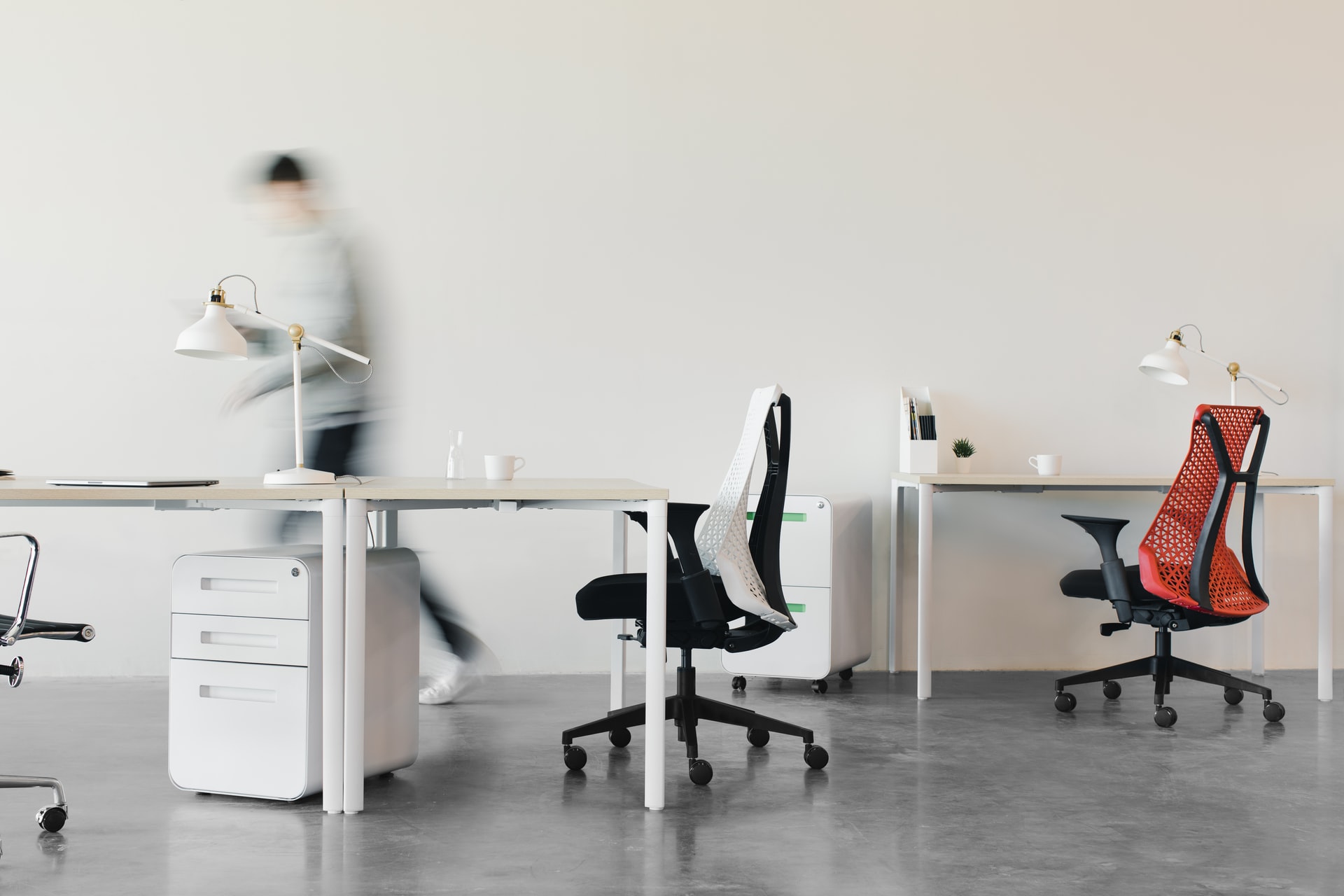Congratulations. You are trying to build a Model 3 hybrid office.
You just picked the hardest one.
- Model 1 doesn’t take much work.
- Model 2 just requires establishing clarity around your hybrid workplace.
- In Model 4, you’ve sold your office and burned the ships. So you are fully committed. Plus, there are lots of good role models.
But to make Model 3 work, you must build as if you were Model 4 and figure out how to add the office back in. It’s completely transformational, but with the same people, same office, and same biases.
And while a lot of teams want to transition to Model 3, there aren’t a lot of role models. The greatest case studies are being created as we speak.
You can create a fantastic hybrid office, but it won’t be easy.
What is a hybrid office?
A hybrid office blends the in-person experience of a physical office with the flexibility of a distributed workforce. Team members may be co-located, working from home, or from a small hub or co-working space.
Everything starts with your HQ
Your company headquarters is where the single source of truth is. It’s where everything important happens. It’s where you go if you need to be updated on what is really happening.
In Model 1 and 2, this is a physical location. In Model 3 and 4 it a digital core.
For example,
- If you want know how the sales team is doing, do you call everyone to the conference room, or check the dashboard?
- If you sense misalignment, do you call a meeting and ask what’s going on, or do you check your OKR tool?
- If you want to know how many purchase orders were processed, do you knock on Bruce’s door, or open up the metrics on the automated process?
- If you have an interpersonal problem, where do you solve it?
- If you want to do “build culture”, where does that happen?
In Model 2, people work remotely when they need to be in focus mode and work on solo tasks. They come to the HQ for all their important collaboration needs.
But in Model 3, if you have a hiccup with someone else, you can’t wait a day until you are back in the office. You’ve got to solve it over digital channels.
Untethered
To pull off a Model 3 hybrid office, you must untether every essential work system from the physical office.
What would you do if you had no office at all? How would you:
- Plan out projects?
- Build trust?
- Measure employee productivity?
- Collaborate on existing projects?
- Keep everyone updated?
- Build up new leaders?
- Check in with team members?
- Make big decisions and set policies?
- Ensure everyone feels welcomed and included?
- Create an innovation process?
- Onboard new employees?
These are all solvable on purely digital teams. A solid Model 3 hybrid office isn’t reliant on a physical space to handle all of these scenarios. But more than a century of office work has made us assume that the office is the best way to do all of these.
Building the office back in
But the beauty (and danger) of a Model 3 hybrid office is that it has an office to use. Being co-located adds something special to how humans interact. So how can you get the advantages of the office without becoming dependent on it?
The office can enhance the experience
Think about the office like a feature of your company. It doesn’t define it, but it’s a great add-on.
Here are some ways a physical office can enhance the experience:
Creating a secure place for those without a good WFH option. Many people don’t have a dedicated space in their home to use as an office. They sit at the kitchen table, or there are a lot of other people in the house that inhibits work. Opening up your office for people as if it was a co-working space is great.
Creating a space for scheduled collaboration times. In-person collaboration is a unique and sometimes necessary experience. For example, you might want to kick off a big project, solve a particularly thorny issue, or have a monthly all-hands. Adding latency-free, high fidelity communication takes things to a new level.
Cross-team networking. A common complaint in digital workplaces is that you don’t know what other teams are doing. What you used to get through osmosis and overhearing is gone. Observing another team and their energy can prompt you to add or remove things from your team. Cross-team meals are a natural way to break down silos.
Meeting with clients. Having a curated space to meet clients has its advantages. But what if the rest of the office is quiet while clients visit? Do you lose out on the buzz and excitement clients were expecting?
But a hybrid office shouldn’t create inequity
If you don’t set clear guidelines on how the office should be used, it will create a gravitational pull on all your work systems. When that happens, people who are in the office more often usually get more advantages. Here are three ways to resist that trend.
Be aware of the bias. Make this topic an open conversation. This is a transformational shift and won’t happen in a month. Regularly bring up how distributed and co-located workers experience work differently. Call out presenteeism and activity-based productivity in yourself.
If it’s worth meeting in-person, everyone should be there. In-person meetings are expensive as it is, but we don’t feel that when everyone’s already in the office. If you fly people in from around the country, provide accommodation, and cater meals, you’ll value that time even more.
Limit the boss’s time in the office. If the boss is in the office everyday, she doesn’t have to confront her own bias. If she’s out of the office most days, she’ll quickly realize any gaps in the work experience. She’ll focus on building reliance and adoption of digital systems.
Buckle up for a bumpy ride
The journey to jump from a Model 2 to a Model 3 hybrid office is long and difficult. It requires a big mindset shift and not just some new policies. But it’s also the only model that lets you take advantage of a truly distributed workplace.
Photo by Laura Davidson on Unsplash
Congratulations. You are trying to build a Model 3 hybrid office.
You just picked the hardest one.
- Model 1 doesn’t take much work.
- Model 2 just requires establishing clarity around your hybrid workplace.
- In Model 4, you’ve sold your office and burned the ships. So you are fully committed. Plus, there are lots of good role models.
But to make Model 3 work, you must build as if you were Model 4 and figure out how to add the office back in. It’s completely transformational, but with the same people, same office, and same biases.
And while a lot of teams want to transition to Model 3, there aren’t a lot of role models. The greatest case studies are being created as we speak.
You can create a fantastic hybrid office, but it won’t be easy.
What is a hybrid office?
A hybrid office blends the in-person experience of a physical office with the flexibility of a distributed workforce. Team members may be co-located, working from home, or from a small hub or co-working space.
Everything starts with your HQ
Your company headquarters is where the single source of truth is. It’s where everything important happens. It’s where you go if you need to be updated on what is really happening.
In Model 1 and 2, this is a physical location. In Model 3 and 4 it a digital core.
For example,
- If you want know how the sales team is doing, do you call everyone to the conference room, or check the dashboard?
- If you sense misalignment, do you call a meeting and ask what’s going on, or do you check your OKR tool?
- If you want to know how many purchase orders were processed, do you knock on Bruce’s door, or open up the metrics on the automated process?
- If you have an interpersonal problem, where do you solve it?
- If you want to do “build culture”, where does that happen?
In Model 2, people work remotely when they need to be in focus mode and work on solo tasks. They come to the HQ for all their important collaboration needs.
But in Model 3, if you have a hiccup with someone else, you can’t wait a day until you are back in the office. You’ve got to solve it over digital channels.
Untethered
To pull off a Model 3 hybrid office, you must untether every essential work system from the physical office.
What would you do if you had no office at all? How would you:
- Plan out projects?
- Build trust?
- Measure employee productivity?
- Collaborate on existing projects?
- Keep everyone updated?
- Build up new leaders?
- Check in with team members?
- Make big decisions and set policies?
- Ensure everyone feels welcomed and included?
- Create an innovation process?
- Onboard new employees?
These are all solvable on purely digital teams. A solid Model 3 hybrid office isn’t reliant on a physical space to handle all of these scenarios. But more than a century of office work has made us assume that the office is the best way to do all of these.
Building the office back in
But the beauty (and danger) of a Model 3 hybrid office is that it has an office to use. Being co-located adds something special to how humans interact. So how can you get the advantages of the office without becoming dependent on it?
The office can enhance the experience
Think about the office like a feature of your company. It doesn’t define it, but it’s a great add-on.
Here are some ways a physical office can enhance the experience:
Creating a secure place for those without a good WFH option. Many people don’t have a dedicated space in their home to use as an office. They sit at the kitchen table, or there are a lot of other people in the house that inhibits work. Opening up your office for people as if it was a co-working space is great.
Creating a space for scheduled collaboration times. In-person collaboration is a unique and sometimes necessary experience. For example, you might want to kick off a big project, solve a particularly thorny issue, or have a monthly all-hands. Adding latency-free, high fidelity communication takes things to a new level.
Cross-team networking. A common complaint in digital workplaces is that you don’t know what other teams are doing. What you used to get through osmosis and overhearing is gone. Observing another team and their energy can prompt you to add or remove things from your team. Cross-team meals are a natural way to break down silos.
Meeting with clients. Having a curated space to meet clients has its advantages. But what if the rest of the office is quiet while clients visit? Do you lose out on the buzz and excitement clients were expecting?
But a hybrid office shouldn’t create inequity
If you don’t set clear guidelines on how the office should be used, it will create a gravitational pull on all your work systems. When that happens, people who are in the office more often usually get more advantages. Here are three ways to resist that trend.
Be aware of the bias. Make this topic an open conversation. This is a transformational shift and won’t happen in a month. Regularly bring up how distributed and co-located workers experience work differently. Call out presenteeism and activity-based productivity in yourself.
If it’s worth meeting in-person, everyone should be there. In-person meetings are expensive as it is, but we don’t feel that when everyone’s already in the office. If you fly people in from around the country, provide accommodation, and cater meals, you’ll value that time even more.
Limit the boss’s time in the office. If the boss is in the office everyday, she doesn’t have to confront her own bias. If she’s out of the office most days, she’ll quickly realize any gaps in the work experience. She’ll focus on building reliance and adoption of digital systems.
Buckle up for a bumpy ride
The journey to jump from a Model 2 to a Model 3 hybrid office is long and difficult. It requires a big mindset shift and not just some new policies. But it’s also the only model that lets you take advantage of a truly distributed workplace.
Photo by Laura Davidson on Unsplash
)
)
)







